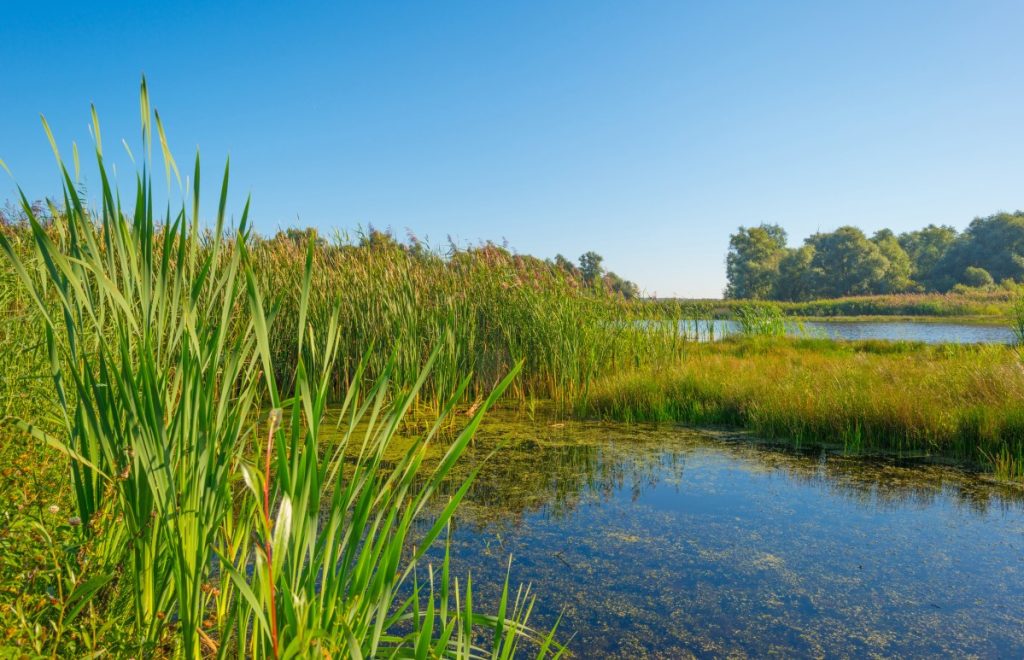Creating more wetlands is an obvious answer to the water quality crisis – Inside track
3 min read
This post is by Emma Pollitt, policy and advocacy officer at the Wildfowl and Wetlands Trust (WWT)
Pollution from agriculture, sewage plants, transport, mining, landfills and industry gets washed into waterways making us sick and harming wildlife. The shocking fact is that only 14 per cent of England’s rivers are in a good state. Calls are getting louder for government and businesses to do something about it and wetlands should be part of the solution.
Natural solutions can help to fix the problem
Treatment wetlands are specially designed wetlands that, when well maintained, can absorb damaging pollutants. They maximise the inherent water cleaning properties of natural wetlands. When sited directly downstream from a source of pollution, they can clean the water passing through them. These wetlands can be used in a range of settings, from dealing with the runoff from agriculture or housing to tackling sewage pollution.
Wetlands can also improve flood resilience, store carbon, boost biodiversity and provide recreational and other wellbeing benefits. One example of their financial benefit to business is Yorkshire Water’s Clifton Wastewater Treatment Works which recently created a treatment wetland at 35 per cent lower cost than a conventional treatment works, with 40 per cent lower operating costs. Wetlands also reduce reliance on conventional, energy intensive water treatment processes and materials, cutting operational costs and embedded carbon emissions.
Treatment wetlands can deal with water pollution at a catchment scale. Farmers can use them to ensure any fertilisers, pesticides or slurry don’t end up flowing out into the wider environment. They cost farmers 60 per cent less to construct and 90 per cent less to maintain than traditional methods of water treatment, but more funding from the Environmental Land Management payment scheme is needed as an incentive to farmers to create them.
Wetlands should be everywhere
Some water companies, businesses and farmers are already using treatment wetlands to deal with pollution, but only on a small scale. The Blue Recovery Leaders Group, set up to create networks of healthy wetlands across the UK, envisions a world where wetlands line our roads, pop up near housing developments, treat our sewage and become a common feature on UK farms.
Legally binding environmental targets, set earlier this year by the government, are not on track. Treatment wetlands should be part of the plan to meet them as they are a simple way to increase biodiversity and water quality. Rather than making scattered one-off investments, they should be a default solution to water quality issues everywhere.
Treatment wetlands are also a way to meet the government’s commitment on nutrient neutrality. This aims to mitigate the pollution caused by new housing developments by offsetting it with measures like treatment wetlands. Worryingly, government sources have suggested the prime minister could support moves to change the Levelling Up Bill and allow housing developments to go ahead dealing with nutrient neutrality at a later date. But the government should instead stand by its previous commitment to nutrient neutrality. Treatment wetlands should be the default solution for reaching this, with housing developers asked to justify why they can’t use them. The government should also ensure developers, and other investors, create more high quality treatment wetlands by establishing a nutrient offsetting code to stimulate a market in ‘nutrient trading’.
WWT recommends that the government helps to build confidence in using treatment wetlands by establishing a pilot scheme. We’ve just released the Wetlands for water quality route map, outlining their potential in the UK and what could be done to hugely expand this powerful natural solution to the current water quality crisis.





